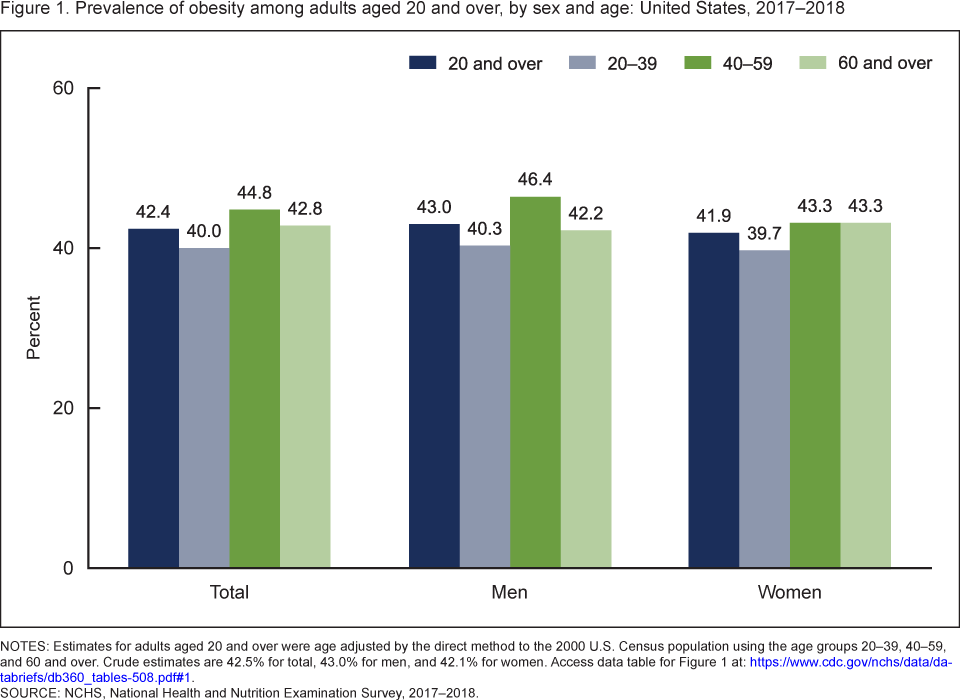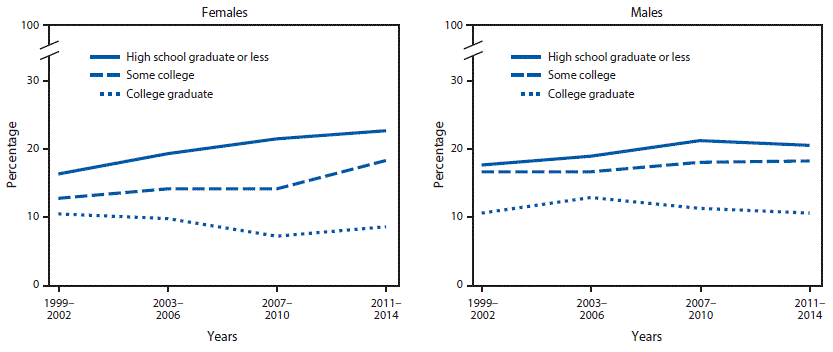1
The Problem of Obesity
Obesity is a common, serious, and costly disease. The statistics simply do not lie. Adults considered obese make up over 42% of the population in the United States, a number which has increased significantly over the last 18 years. (“Managing Overweight”, 2013) While there are slight variations in the statistics based on age, no age group is immune to the obesity epidemic.

Unfortunately, the problem is not limited to adults. Childhood obesity in the United States is a growing threat. Obesity affected approximately 13.7 million children and adolescents or nearly 18.5% of the population aged 2-19 years. The prevalence of obesity increased with age in the youth population by a larger degree than in adults. Those youngest included in the statistics, 2-5 year olds, had an obesity rate of 13.9%. The largest prevalence in the youth population were those aged 12-19 years old with a rate of 20.6%. (Ogden et al., 2018).
Age is not the only factor contributing to an increase in obesity prevalence. Socioeconomic factors also have a correlation to the prevalence of obesity in the youth population. As the level of education of the head of household increased, the prevalence of obesity for children and adolescents decreased. There is a 9% decrease in obesity prevalence for those in the highest income group compared to those in the middle income group and an 8% decrease compared to those in the lowest income group. The same pattern was seen overall and in females and males in all race-Hispanic origin groups, but differences were not significant for non-Hispanic black youths or non-Hispanic Asian youths. (Ogden et al., 2018)

Obesity is problematic because it contributes to and exacerbates a number of serious health conditions. The risk of morbidity from hypertension, dyslipidemia, type 2 diabetes, coronary heart disease, and many more diseases is raised with the prevalence of obesity. Obesity can additionally contribute to certain types of cancer that are some of the leading causes of preventable, premature death.
Given the increase in severe medical conditions, obesity also creates significant costs. The estimated annual medical cost of obesity in the United States was $147 billion in 2008. The medical cost for people who have obesity was $1,429 higher than those of normal weight. (Finkelstein et al., 2009). While these numbers illustrate the costs from 2006 (in 2008 dollars), given the significant increase in the prevalence of obesity the current costs attributable to obesity are likely to be staggering.

